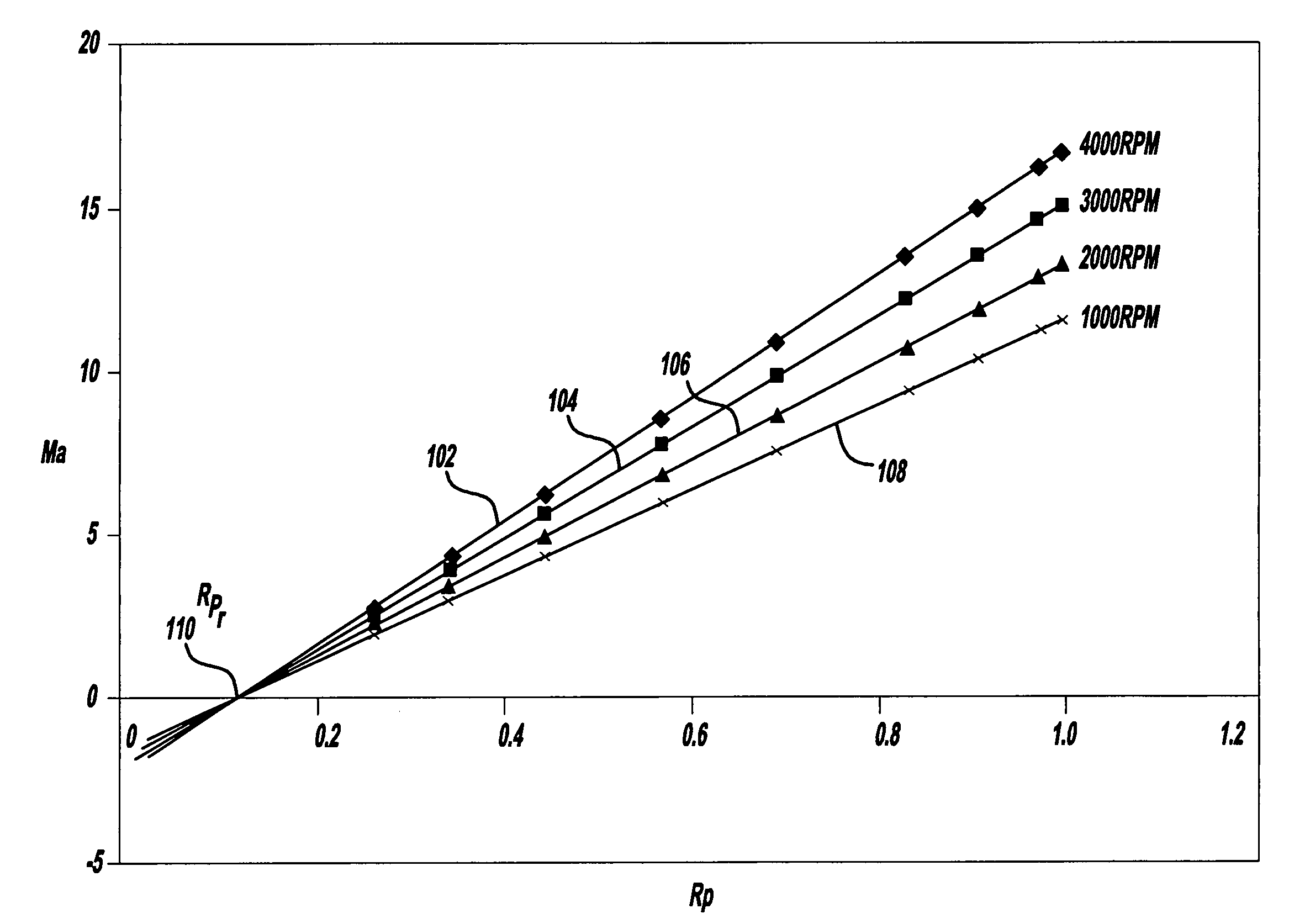Method for controlling an operating condition of a vehicle engine
a technology for operating conditions and engine, applied in the direction of electric control, braking system, instruments, etc., can solve the problems of complex combination of software tabular and surface data, difficult and high dependence on hard-to-achieve precise measurement of engine operating parameters
- Summary
- Abstract
- Description
- Claims
- Application Information
AI Technical Summary
Problems solved by technology
Method used
Image
Examples
Embodiment Construction
[0015]The method of the invention is based on model refinements to both volumetric efficiency and gas density. We begin by defining the volumetric efficiency as the ratio of the actual cylinder volume to the cylinder volume upon intake valve closure for that cylinder. This definition is consistent with the classical definition of a mole fraction and therefore the refined definition of volumetric efficiency is equal to the mole fraction of air in the cylinder. Neglecting fuel, we presume that the contents of a selected cylinder upon closure of the intake valve are limited to air and exhaust gas residual. Hence, the mole fraction of the residual exhaust gas is simply 1—the mole fraction of air. Conversely, the mole fraction of air is given by 1—the mole fraction of the residual exhaust gas. Hence, since the method uses a model of the residual exhaust, the mole fraction of air is calculated from the determined mole fraction of the residual exhaust.
[0016]Knowing the relative amounts of ...
PUM
 Login to View More
Login to View More Abstract
Description
Claims
Application Information
 Login to View More
Login to View More - R&D
- Intellectual Property
- Life Sciences
- Materials
- Tech Scout
- Unparalleled Data Quality
- Higher Quality Content
- 60% Fewer Hallucinations
Browse by: Latest US Patents, China's latest patents, Technical Efficacy Thesaurus, Application Domain, Technology Topic, Popular Technical Reports.
© 2025 PatSnap. All rights reserved.Legal|Privacy policy|Modern Slavery Act Transparency Statement|Sitemap|About US| Contact US: help@patsnap.com



